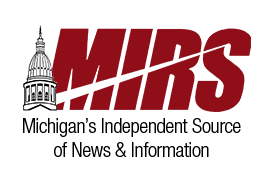(Source: MIRS.news, Published 04/24/2023) Nurse practitioners (NP) in Michigan would be permitted to evaluate patients and to administer various treatments without having a contract with a supervising physician, which is currently mandated in the state, under legislation introduced in the Senate.
"Michigan has some of the most restrictive laws in the country for nurse practitioners to operate, while in most states, nurse practitioners can operate independently without having to pay a doctor to sign off on their work," said Sen. Jeff Irwin (D-Ann Arbor) to MIRS on his SB 279.
"We're graduating tons of great nurse practitioners out of our institutions of higher learning … when they're deciding whether or not to stay in Michigan, we're asking them to decide to stay in a state that doesn't respect their training enough to give them independent practice authority."
On Monday's episode of the MIRS Monday podcast, Irwin said all across Michigan, NPs are already practicing independently in every way that matters to patients.
"In most settings, nurse practitioners are the ones who see the patients. They're the ones who assess the problems. They're the ones that diagnose and produce a course of treatment for those patients, and then somewhere else, there's a doctor who has to sign off on that, and oftentimes that doctor never sees the patient and is never even in the building where this patient has come in," Irwin said. "In cases like that, I started to scratch my head and say 'is it really bonafide supervision?'"
Denise Hershey, an East Lansing-based NP specializing in family medicine, told MIRS she knows of colleagues whose physician collaborator opted to leave the healthcare field or to no longer continue their contract, leaving an NP blocked from practicing until they enter a new agreement.
Additionally, Hershey explained how when ordering tests for a patient, the results are automatically routed to her physician collaborator instead of her.
If there was an abnormality, the waiting period connected to a physician viewing the results and sending them off to her could result in delayed treatment or postponed intervention for a patient.
"The other issue is the fact that sometimes it can take a long time to find someone who's willing to be your contractor, be your collaborator, in some situations … unless you're willing to pay them," Hershey said. "This decreases the (number) of patients who have access to a healthcare provider."
According to the American Association of Nurse Practitioners (AANP), 27 states and the Northern Mariana Islands, Guam and Washington, D.C. have adopted licensure laws offering NPs "Full Practice Authority (FPA)."
FPA specifically applies to evaluating and diagnosing a patient, ordering tests and managing treatments – like through prescribing medication. Hershey said NPs are trained, educated and focused on preventive care and wellness, and aim to collaborate with patients on developing healthy lifestyle adjustments.
In an August 2021 study surrounding the potential benefits of continuing FPA for primary care NPs, researchers referenced projections showing that the national NP workforce will have jumped by 93% between 2013 and 2025.
From 2010 to 2016, a report featured in the study found that the average number of NPs serving rural communities in the country leapt from 25.2 to 41.3 for a population of 100,000, while the average number of physicians simultaneously dropped from 59.5 to 47.8 per 100,000 individuals.
As for areas recognized nationally for having the highest proportion of low-income residents, the number of NPs serving a population of 100,000 skyrocketed from 19.8 to 41.1.
Hershey said she wouldn't say there's simply more NPs than there are physicians, but NPs "are more likely to work in underserved and rural areas than physicians and physician assistants, and nurse practitioners are one solution to the healthcare shortage."
According to data published by the Association of American Medical Colleges (AAMC), the United States could experience a shortage of up to 124,000 physicians by 2034, which would account for primary and specialty care collectively. Meanwhile, the price tag for becoming an NP has consistently – per say of the AANP – been 20% to 25% smaller than the preparation costs for physicians-in-training.
"When you look across the state, there is a diversity of different setups, and there are some setups where doctors are very actively part of a real healthcare team with nurse practitioners," Irwin said. "But there are other setups where nurse practitioners are the ones who are seeing the patients. They're the ones who are assessing and diagnosing and prescribing a course of treatment, and then they're still required in those cases to find a contract and pay a contract."
Irwin's primary co-sponsor is Sen. Rick Outman (R-Six Lakes), who expressed in a statement that SB 279 would alleviate the lack of physicians in his mostly rural district and simultaneously ensure quality care for patients.
On the other hand, the legislation was opposed by the Michigan State Medical Society (MSMS). The organization spotlighted concerns that SB 279 sought to remove physicians from the patient care team.
"Data shows these measures have failed to improve access to care, failed to improve quality of care, and failed to reduce costs," said MSMS President Thomas Veverka, MD, in a press release. "SB 279 removes physicians from the care team and instead has the potential to create a two-tiered health care system where a patient's zip code will determine whether a physician is involved in their care decisions."

